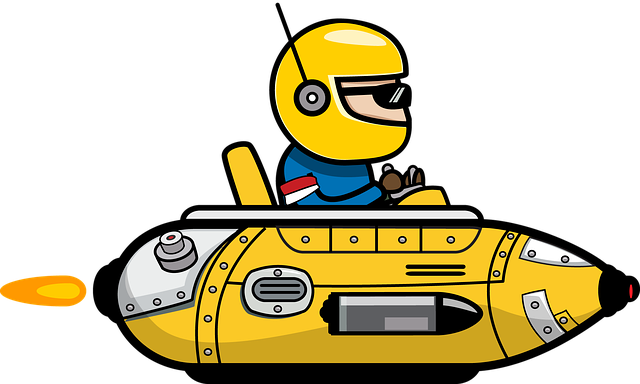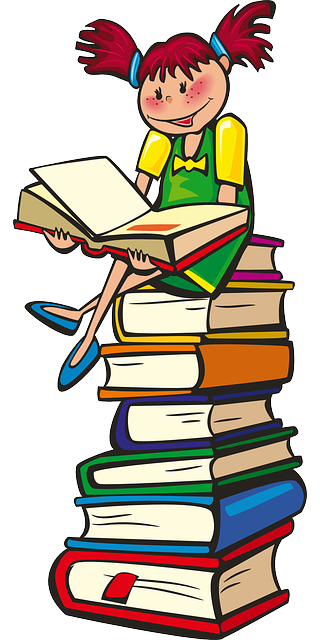You must know that the development of English language learning stands on four pillars – listening, speaking, reading, and writing. Mostly, all of these skills start to develop at a very young age. The development of listening and speaking skills are more spontaneous than the other two. It’s something that you “pick up” instead of learning consciously. Reading and writing skill development requires a lot more attention and practice. And, when it comes to reading comprehension, it’s a whole another story!
However, there are a lot of activities and strategies that one can follow. Today, I will talk about developing the skill of reading comprehension in detail.
So, it would be a long, long read!
But it would be immensely helpful for –
- Students struggling to decode meanings of different kinds of texts
- ESL learners who are willing to have a strong command over the English language
- Teachers who want to discover unique strategies for teaching the class
- Parents who want nothing but flourishment their children
Let’s start then!
Table of Contents
Chapter-1: Understanding the Concept
Chapter-2: Importance
Chapter-3: All About Higher Order Thinking Skills
Chapter-4: Content Area Reading – How to Understand the Premise?
Chapter-5: Fluency is the Key!
Chapter-6: The 3-Step Strategy to Improve Reading Skills
Chapter-7: The Big Challenge: Teaching Kids to Read
Chapter-8: Strategies That Teachers Can Follow
Chapter-9: A Guide for ESL Learners
Chapter-10: Parents Are the Real Superheroes!
Chapter-1: Understanding the Concept
Dissecting the Definition: What is Reading Comprehension?
You might have noticed by now that I am constantly calling the topic in mind to be “reading comprehension,” not just “reading.”
So, is there any difference between them?
Of course!
Reading is a simpler task – it is to recognize written symbols to construct something meaningful. So, if you are looking at an English word (symbols), and understand the meaning of it, you are reading it.
Reading comprehension is a more vivid idea compared to simple reading.
It is the act of understanding the message that an author or writer has conveyed through a written text, both textual and sub-textual.

While reading comprehension, you will have to dig deeper and understand the hidden messages rather than the word-by-word textual meaning. In other words, you will have to feel the emotion behind the words.
Diving Deeper: Understanding the Concept
Does everything sound a bit confusing to you?
Let me explain with a simple example.
Jane Austen started her legendary novel Pride and Prejudice with the following sentence –
“It is a truth universally acknowledged, that a man in possession of a good fortune, must be in want of a wife.”
If you try to dissect the sentence word-by-word, it would seem like a simple sentence trying to convey the message that all the rich men in this world want a wife. However, there are some deeper meanings lying under the simple words.
For example, the writer is mocking the society and the traditional views of the common men by using phrases like “a truth universally acknowledged” or “in possession of a good fortune.”
A reader can understand the flaws of the society and the views quite easily reading the sentence. Jane Austen gave a hint about the theme of the novel by helping us to grasp the scenario of the society in just a single sentence.
This is the beauty of literature!
Understanding these cues while reading a text is the basic concept of reading comprehension. So, as a reader, you will have to look for these cues to understand what message the writer is actually trying to convey to you.
Chapter 2: Importance
Why Is Reading Comprehension Important?
I think you are now getting a grasp of the concept of reading comprehension. It’s more than understanding the meaning of the words and grammar. It’s all about getting the message the writer is trying to tell.
It not only sounds difficult, it IS difficult!
So, why should you even bother enhancing this skill? How is this skill going to help you in real life?
Well, the answer is quite simple, the skill of reading comprehension will not only come handy in your school, but it will also help you become a better human being.
One of the most important humane traits is to have empathy – understanding the emotion of others. Reading comprehension or literature will help you to cultivate empathy.
This social skill will help you in many real-life situations and boost up your people skills. If you are having a hard time socializing, you should befriend literature, it would be a lifesaver.
The Key Points
Let’s check out how reading comprehension plays a part in our daily lives –
- Understanding and analyzing English literature. Your grades in school will definitely get a positive boost by mastering the skill.
- It will help you dissect the texts in every single subject. Even a math or physics book is written in English!
- It would help you in major exams in your life. For example, getting a decent score in SAT or other similar competitive exams is very much dependent on reading comprehension.
- Reading and writing (symbols) are two of the oldest signs of civilization. How can you call yourself a civilized human being with poor reading skills?
- You will have to deal with “reading things” till the last moment of your life. There is no escape from it. Even after you graduate, you will have to read texts in your professional life. Our lives are surrounded by writings.
- If you want to take the pleasure of being a writer, you must have a higher knowledge of reading comprehension first.
- If you want to become sharper, or just want to enjoy a good book, you will have to have the skill of reading comprehension. There is literally no escape from it!
Chapter 3: All About Higher Order Thinking Skills
The Door to Higher Order Thinking Skills
Do you remember the time when you were just starting to learn reading?
You were struggling with the letter identification, pronouncing each letter individually, then joining the letters together, and finally decoding one single word.
You were even stuttering, probably a little!
Don’t feel ashamed, we all have been through that. That’s how every single person in this world learns to read. However, you are definitely past that stage; otherwise, you wouldn’t be reading this article!
So, what happened?
Yes, you grew and got better. That’s obvious.
But you developed another skill meanwhile – the thinking skill. As you develop the thinking skill, you start to read the text without pronouncing each letter to form a word.
With time, your thinking skill enhances. Eventually, you develop another skill called the higher-order thinking skill.
With this skill, you can “read between the lines” as you have a better knowledge of abstract concepts. This is what differs an average reader from an advanced reader. Once you master this unique skill, you can read comprehension with perfection.

Remember, mastering the skill of reading comprehension is about understanding the obvious and the inner meanings of a text. It’s an ability that makes you unique, better than the rest!
With a poor reading skill, one can barely process information to construct a meaningful message out of a text.
As you know, the ultimate purpose of reading and writing is to communicate. If someone fails to understand the actual meaning of a comprehension, he or she is actually failing to communicate properly.
The Higher Order Thinking Skills: How Smart Are You?
As you grow older, your cognition power improves. You can understand a concept better, have a better analyzing, synthesizing, evaluation skill. The growth rates are different for each person.
Actually, you are developing your higher order thinking skills. The term got popular in the late 1950s as Benjamin Bloom, a renowned educational psychologist, started developing a system to identify the growth of cognitive power.
To define the cognitive strength of an individual, he proposed six levels of cognitive domains. The higher one reaches, the better thinking skill that a person has.
Here are the six levels of the cognitive domain (in chronological order) –
- Knowledge
- Comprehension
- Application
- Analysis
- Synthesis
- Evaluation
Some of you might think that the higher order thinking skills have a connection to the ability to memorize facts or accumulating as much knowledge as possible. It’s far from that.
Rather than focusing on knowledge accumulation, the concept prioritizes on “how well one can process the accumulated knowledge.
For example, suppose, you have memorized the theory of Newton’s second law of motion. Having the higher order thinking skills means the ability to understand the concept, connecting the theory with other theories of physics, and using the theory in real life to solve different problems.
So, in a sense, you can say that the higher order thinking skills enable you to have a complete grasp over a concept.
How Can You Develop Higher Order Thinking Skills with Reading Comprehension?
A student with high memorizing skill but poor thinking skill might be able to answer the obvious questions word by word but struggle when asked higher order creative questions. For example, they can describe “the attack on Pearl Harbor” perfectly, but if you ask them the impact of the attack in the second world war, they will struggle.
In school, the memorizing skill might come in handy, but in real life, higher order thinking skills matter the most.
The key to higher order thinking skill is critical thinking – questioning again and again until you can reach a conclusion. Parents can help their children nurture these skills from childhood.
Almost every kid reads storybooks soon after learning to read. A parent should provoke them to ask questions about the stories like – “Can you tell me what the story was about?” or “Is it like the story that you read last night?” or “Can you tell me the differences between this one to the last one you read?”
A teacher can ask similar questions to his or her students. They can ask the students about the characters in a story, their motivations, their perspectives, etc.
In this way, a parent or a teacher can plant the seeds of critical think in young minds.
There is another smart thing that you can do. Ask the kids to change the story for a different climax. Such clever tricks will flourish their creativity and problem-solving skills; at the same time, induce fun in the learning process.
If you think about it deeply, all of these tricks will eventually develop their skill of reading comprehension.
Chapter 4: Content Area Reading – How to Understand the Premise?
Content Area Reading: The Power Tool of a Skilled Reader
When you read different things, you read them differently. Think about it, is reading a physics textbook feels the same as reading an adventure novel?
Certainly not!
Our brains act differently while reading newspapers, textbooks, novels, website contents, tutorial articles, and poetries. Although all of them are written in English, we find these contents completely dissimilar from each other.
As you grow as a better reader with improved thinking capability, you start to adopt unique approaches to understand the contents.
This is called content area reading, and now we will discuss it.
What is Content Area Reading and Where Can You Apply It?
Typically, the term content area reading is related to the studies of science. To understand a particular topic, one must gather up the knowledge related to the topic so that he or she can fully understand the topic.
For example, if you want to understand the second law of motion by Newton, you will need to understand the concept of force, motion, and inertia first. Otherwise, you will fail to grasp the theory.

Similarly, when you are learning history, you will have to know the historical background that leads to any particular incident. For example, before you jump into learning about the second world war, you should know about the first world war, the great depression, the third Reich, and the socio-economic conditions of the countries directly involved in the war.
I think you are getting the gist now.
Although the content area reading is mostly related to scientific, social, or economic studies, we can incorporate it into other contents too.
We need to think outside of the boundaries here.
Suppose you are reading the news in a magazine, you should be aware of the situations and contexts to fully understand the importance of the news and its impact on your life.
The only exception that I can think of is fictional writings. While you are reading fiction, the writer will gradually introduce you to the situations and the characters that will play a vital role in the climax.
Apart from reading fictions, you will need to rely on content area reading every other scenario.
How Can You Use Content Area Reading Skill While Reading Texts?
It would be ridiculous for a writer to expect that a reader will read a few hundred books so that he or she could understand the message the writer is trying to convey.
It’s up to the reader to understand the context. You can adopt a few good strategies to get better at understanding the contents.
Your first step should be trying to figure out the genre of the text. Once you figure out the context, you should be able to connect the dots. If there are illustrations available, you check them out and try to connect the content with the illustrations. The illustrations are put there for a reason!
A simple yet effective strategy is to incorporate a three-level reading strategy. It’s something like this –
- Literal meaning – understanding the direct message the writer is trying to convey.
- Inferential meaning – reading between the lines to understand the inner meaning of the text.
- Evaluation – combining the literal and inferential meaning to construct a probable meaning and summarizing the text to find the ultimate message.
To master the three-level reading strategy, you must keep practising and broaden your circle of reading materials.
Do you love reading adventure novels?
Great, keep on reading, but make sure to read other genres too.
For example, try cleansing your pallet with some poetries, history books, or non-fictions from time-to-time. Such practices would make you a better reader, and you would be able to incorporate content area reading in a better way.
Developing Content Area Reading Comprehension: Strategies That Help
A child, in his or her early days, “learns to read.” Once they become fluent in reading texts, they start to “read to learn.”
It’s the basic idea, right?
Yes, it’s true, but you can see the opposite of this scenario as well.
Sounds confusing?
The kids, while learning to read, will also learn various things about the context of the text he or she is reading. So, from that perspective, they are actually “reading to learn!”

Also, even an older person can develop new ways to read comprehension to mine information out of a text. So, what they are doing? They are “learning to read!”
So, you see, it’s an interchangeable situation.
Textbooks often cause boredom among the students. Most of the students don’t like the way the textbooks are designed and written and often think of the act of reading the textbooks as a painful and boring task.
But why? Are the writers of the textbooks intentionally make the books more boring?
Certainly, that’s not the issue here.
What happens is that the textbooks become harder to read as we grow up. The writers intentionally make books a bit harder so that the students can develop their reading comprehension skill. Rather than depending on the plainly written texts, the writers often use different other learning tools to help a student grasp a concept. Images, tables, statistical reports, summary statements are some of the helpful additions that the writers introduce to the students.
Other than that, the writers of these textbooks use different cues in their language to make things easier for the students.
A Deeper Look!
For example, they use words like “however,” “although,” or “though” to give an idea that we, the readers, have to think of some kind of comparison.
So, the students should look for these cues while reading. A good idea would be making a summarization of each paragraph so that you can construct a wholesome summarization of the whole passage or comprehension.
There are certain other tricks that I would discuss later in this article.
Chapter 5: Fluency is the Key!
Do you stutter while reading? Or maybe, you sound too robotic with occasional falters.
Don’t worry, you are not the only one!
What you lack is fluency.
Reading comprehension and fluency are tied together in more than one way. You can say that fluency is a must for proper reading comprehension.
If you don’t have fluency when it comes to reading, you would probably take a lot of time decoding the meaning of a text. Thus, fluency is directly connected to reading comprehension.
A slow reading pace would make you fall behind from your peers.
But that’s not the main problem. There is another more severe issue that would oppose the main threat.

If you don’t have fluency, you would be more conscious about reading the text properly and try as much as possible to read the text quicker. If you do that, your brain would have less scope to store the information in your brain.
You would even miss different fragments of information. Such actions would hinder you from grasping the gist of the text. So, the ultimate purpose of gathering information would get the hit. You can try developing your vocabulary to become a fluent reader.
I think you can picture the importance of fluency in reading by now.
How to Improve Reading Fluency?
Okay, fluency is important. We all get it, but that’s not the issue here. We need to know how to improve it. That’s the issue that should bother us.
But what’s the solution? We need to find a solution to this problem, just like every other problem in our life.
But where should you begin?
Reading Comic Books
Comic book comes to my mind at first. When you are reading comic books, you have images linked to every single sentence and dialogue. So, you can summarize and find the meaning of the text from the linked image. It makes you understand the context and scenario.
How About Some Manga?
Just like reading comics, you can try reading Japanese manga. There is no shortage of manga in Japanese literature. You can even try the visual novels online. Both the manga and graphic novels would serve the same purpose of reading comics boosting your fluency and reading skill.
Time to Watch Some Movies
Then, you can try watching movies and your favorite TV series with subtitles. Reading the subtitles is a bit challenging compared to reading the comic books or manga. You will have a shorter time period to read the subtitles assigned to any particular frame.
It’s more dynamic!
However, it would help your fluency a lot.
Modeled Reading Strategy
Lastly, you can try a modeled reading strategy with the help of another partner who is already a fluent reader. You can learn from him or her how you should read and what is the proper fluency level.
You can learn the suitable reading speed, how he or she uses the punctuation marks to change the speed making the reading more soothing and the proper intonation.
There are a lot of ideas that you can adopt to make your reading comprehension more fluent. However, you shouldn’t think of the fluency to be everything about better reading comprehension. A lot of other factors play a major role in developing the overall reading comprehension skill.
Chapter 6: The 3-Step Strategy to Improve Reading Skills
How Can You Improve Your Reading Comprehension Skills?
Improving any skill will require time and a perfect strategy. Over time, many people have tried to come up with great strategies that can help you take your reading comprehension skill at a level of finesse.
As there are a lot of smart strategies that you can follow, I would try to talk about all the great ones that I find helpful. Just a reminder, there are different other strategies that can serve you purpose and case better.
I would suggest you go through all the strategies and come up with a customized plan that can help you the best.
A 3-Step Strategy for Improving Reading Comprehension Skill
To understand the 3-Step reading strategy, you need to understand the basic concepts of guided and relaxed practice sessions.
What is Guided Reading?
A guided practice session would be more structured, where you will follow certain rules and have preset “study materials” to improve your skill.
For example, if you are setting yourself a time limit of twenty minutes to read a certain passage and then writing down the gist of that passage while adopting new words, you are partaking in a guided reading practice session.
It’s not mandatory to read passages from textbooks. You can even read articles from magazines as the passage and then write down the summary of it.
However, I should remind you that the guided practice can become a burden for you are consciously taking part in a practice session. As reading is an inseparable part of our lives, the sessions should be fun; never a struggle for you.
So, I would suggest you to take part in the guided sessions, not more than 2-3 times a week.
What is Relaxed Reading?
The relaxed guiding sessions, as the name suggests, are more relaxed. You will read only the materials that you love personally.
Think of reading a thriller or detective novel. It should be a genre that you love. Moreover, there is no time limit, so you shouldn’t feel any rush.

Take your time and enjoy it.
If you are already a casual reader, then increase the volume of reading. The main purpose is to have fun.
The Steps in Action!
The 3-step strategy that I am about to share with you would be a mix of both guided and relaxed reading sessions.
Here is the detailed concept –
Step 1: Assess Your Current Reading Skill
Before you begin anything, you should first be aware of the current level of reading comprehension skill. As there is no method or test to measure the skill level, you will have to try the self-judgment approach.
Clear your mind and take a piece of paper.
Ask yourself, “What am I lacking?” or “What do I want to improve regarding my current reading skill?”
Some answers will deliberately come to your mind.
You might want to improve your vocabulary so that you can understand the texts better. You might want to have a lag-free smooth reading capability. Or, might even want to understand the inner meaning of the texts more easily.
It all depends on your visions and goals.
Once you find the things that you want to develop about yourself, you can come up with ideas that target that particular section.
However, you should develop your spelling skills too. Spelling quiz can come in handy in this case.
Step 2: Plan a Reading Schedule and Stick to It
Depending on your demands and case, create a list of reading material. While planning, make sure your list of reading materials has suitable texts for both guided and relaxed reading.
You should take part in the guided reading session two to three times a week. None of the sessions should be more than an hour. Otherwise, it would become a burden for you.
Start keeping time while you read a 1,000-word text. Suppose you need 15 minutes to complete read the text. Write it down on a sheet. Your goal would be to complete similar-sized texts in 13 minutes the next.
Once you start to complete the reading within 13 minutes, try limiting the time to 11 minutes next.
Gradually, you would get better at it.
But I should warn you about something. Never rush the process. You should also be able to understand the text fully. If you rush, it’ll only make you more frustrated.
Everything takes time to master.
Apart from the guided reading plan, you should also spoil yourself a bit reading casually. Don’t set any target while having the relaxed sessions. Just enjoy the story.
Remember, whatever you plan to improve your reading skill, it should be a combination of both sessions.
Step 3: Take Part in Vocabulary Building Sessions
The larger vocabulary you have, the better you would get at reading comprehension. But before that you will have to identify your current vocabulary level.
It’s THE universal truth about reading comprehension!
As you are practicing with guided and relaxed reading sessions, you will get to see new words every now and then. You might guess the meaning of the words from the context but should always check up the words from the dictionary.
When you do so, you would be picking up not only the meaning of the word but also can see how to use it in a sentence.
You can even try to follow the flashcard method to increase your vocabulary. If you think that making custom flashcards would be a hassle, you can try getting a premade one.
I have written a whole article about vocabulary development and reading comprehension. Check it out!
Barron’s 1100 Words You Need to Know is an exceptionally good book that can help you.
You can also visit the vocabulary words section in SpellQuiz. Here, you will find the Dolch Sight Words, Fry Sight Words, and 150 Written Sight Words developed by the brightest linguistic experts in the English language.

Finally, I want to say that, rather than making yourself too much restrained with rules, try reading for fun. If you can take pleasure from reading, you will certainly improve your reading comprehension skills, in one way or another.
Start reading the obvious books at first, like Harry Potter by J.K. Rowling, The Lord of the Rings by J.R.R. Tolkien, or The Song of Ice and Fire by George R.R. Marin.
Chapter 7: The Big Challenge: Teaching Kids to Read
Kids Learn in a Different Way!
The 3-Step reading skill enhancement strategy that I just talked about is mostly designed towards an adult. But if you ask a child to go through the same tough strategy, he or she will certainly struggle.
So, obviously, you will have to adopt a different approach to teach the kids. Neither the teachers nor the parents can help a child developing reading skill. They must work together to create a suitable learning environment for kids.
First of all, if you are thinking that reading is an easy task, you are wrong, very wrong. Human brain scans suggest that our brains become extremely active while we are reading as different areas light with activities.
It’s quite obvious.
When we read, first, we see the letters and words. Then, we read them aloud based on our knowledge of sounds and phonemes. After that, we combine the visual and auditory data and paint a mental picture that describes the words and letters we just read. Finally, glue the mental images together to form a meaning.
So, you see, reading is a complicated yet instantaneous process.
The big question is – how can you a child such a complicated process?

The beginners’ lessons should be explicit. That means a teacher, a parent, or an adult should show the children how to read properly. The children would learn by observing their model. That’s why some prefer to call it a modeled teaching method.
For example, young kids can start with 1st grade vocabulary words and then gradually start practicing the tougher sessions like the 12th grade vocabulary words.
Gradually, teachers and parents should introduce children to different types of reading. They should also diversify the lessons by choosing a different genre every time. Such diversity will clear off the chance of monotony and make the lessons more interesting.
Reading Comprehension Strategies for Kids
There are certain “tools” that a child can use to learn reading comprehension. The more and better tools you can help child harness, the sharper his or her reading skills will become.
So, how can you help the kids yield these tools? Well, you could try following some smart strategies.
Check them out –
The Constructive Q&A Sessions
Questions help us to realize the truth from different angles and perspectives. The more questions you can ask about something, the more diverse answers you can find about it.
The good news is that kids tend to ask more questions than adults. You can use this habit of questioning for reading comprehension development.
Here’s how you can do it.
Create some premade sets of questions about a short story or a simple text. After you have designed the questions, ask your student or child to read the short story or text. You can even help him or her about the text before so that they can understand the context better.
After they have completed reading, ask them the questions one by one. Remember to make the question simple. They are not giving a test. The questions should be fun that have insightful answers.
For example, if they have read Pinocchio, ask them, “Why did Pinocchio’s nose grow?” Such simple questions are easy to answer yet quite effective to judge if someone had paid attention while reading.
You can even try asking philosophical questions to make them acquire value from reading. Such practices are really helpful for the inner development of children.
Vocabulary Buildup
The best way to acquire a strong vocabulary base is to read. The more you read, the more word you can collect.
Reading comprehension is better than memorizing a dictionary for growing vocabulary. Because you can see the use of a word in sentences and understand the context the word fits perfectly.
A dictionary might give you the definition or the meaning of a word, a reading session teaches you proper application.
However, if someone is learning to read, it would be quite obvious that he or she doesn’t have a strong vocabulary base.
As a parent, you should read the text yourself first. While reading, find out the words unfamiliar to your children.
Either you can teach them words first, or you can clarify the meaning of the new words after the reading session. There is another approach that you can take. Rather than talking about certain unknown words, you can give them certain hints referring to the words.
In such a way, you can let them have the joy of discovering new words but at the same time, teaching the words beforehand.
Self-monitoring
As I have said a couple of times, the main goal of reading in communicating and understanding the true meaning of a text. A good reader always makes sure that they are understanding the actual meaning of a text while reading.
They even re-read some paragraphs so that they don’t miss any tiny detail. If they can understand any part of the text, they adopt a different approach.
A child, on the other hand, isn’t aware of such skill and typically skips the part he or she doesn’t understand. So, you should make them aware of the self-monitoring process.
Ask them to read individual lines and decode the meanings. After that, you can ask them to summarize the whole text. In this way, they can understand the true message the writer is trying to convey.
Summarizing the Whole Concept
You might not have realized it, but your brain always makes a summary of every single incident of your life!
Don’t you believe me?
Try thinking of the Harry Potter movies; what comes to your mind?
Magic, adventure, fantasy, or muggles?!
You see, we create a gist or summary of every book, movie, or TV show. These summaries help us to sort and store the memories and other details in our brains easily.
Yes, it is an instantaneous and involuntary process, but actively summarizing a text or book that helps us to understand the core meaning better.
So, for this trick to work perfectly, you should ask your children to make summaries, and you can discuss later. Discussing the summary will help your children to be a more logical and organized thinker.
Help Them Focus, More!
While someone is reading, they are actually gathering a lot of new information. Without focus and attention, it’s impossible to store the information properly.
Even a good reader might lose the track of the information flow if they lose focus. Soon enough, they find themselves reading some gibberish that doesn’t make any sense.
Actually, they aren’t gibberish. They lost their attention and now roaming around in mazes of information. You wouldn’t want your kids to suffer like this, would you?
So, ask them to maintain focus until they finish reading a particular section. If they are feeling tired and bored, you should encourage them to take a break.
Never push them too hard.
Let them move at their own pace. Otherwise, they would lose interest in reading entirely.
Chapter 8: Strategies That Teachers Can Follow
Teaching Reading Comprehension in Schools: Teachers Are Superheroes!
Teachers build up the basic pillars of a student’s educational base. Just like other lessons, a student can learn so much about reading comprehension in the classroom.
The learning begins from the early days in kindergarten. When a child is in kindergarten, every lesson seems new to them. Moreover, they tend to be more sensitive and fragile. So, the teachers have to be extra delicate while teaching in kindergarten.
To bolster the base of reading comprehension skill, the teachers can focus on teaching three fundamental factors –
- Phonemic awareness
- Phonics
- Reading comprehension
Without having a strong command over these basic areas, it would be hard for a kindergartner to excel at reading.
A teacher must keep one thing in mind while teaching, each student will learn at a different speed and using different strategies. Some of these strategies might seem a bit odd, but they shouldn’t discourage any child as diversity is magnificent!

Also, the teachers should understand that reading is not an easy skill to master at all. We, adults, don’t ever think that reading can be a daunting challenge. However, it could be a nightmare for a child who is just trying to learn to read.
As a teacher, you should be innovative and open to experiments as it would flourish your students to learn anything.
And, finally, you have to be patient, very patient!
Step 1: Curating Phonemic Awareness
Think of the knowledge of phonemic awareness as the building blocks that would help you to construct everything. With the knowledge of phonemes, one can understand the proper way a word should sound.
Are you looking for a good source to understand the basics of phonemic awareness and phonemes? You can check my advanced guide from here!
Basically, you can think of the phonemes as the sound units that construct every word in a language.
For example, if you are trying to teach someone the pronunciation of the “apple,” you should divide the word into smaller chunks. Here, the possible chunks would be – “a,” “puh,” and “l.”
You can consider these chunks of sounds to be phonemes. Of course, this is an example, not the actual phonetic breakdown of the word “apple.”
So, whenever your students are struggling to pronounce or read a word loud, you can help them to break the words into smaller chunks.
To make them a more fluent reader, you should teach them the basic phonemic awareness from the beginning. If you teach them about phonemic awareness, they can even decode more complicated new words all by themselves.
You will not have to teach them each word separately but teach them to decode the words themselves. This strategy would be better and fruitful, even in the long run.
So, make sure you teach them 44 sounds of the phonemic alphabet along with the traditional alphabet of 26 letters.
Step 2: Teaching Phonics
Although I am making it a separate step, it is actually the extension of the curating phonemic awareness. By phonemic awareness, you are actually planting a seed, and phonics is the full-grown tree coming from that seed.
After your students are getting familiar with the concept of phonemes and the sounds, you should focus on teaching them phonics in a more formal and constructive way.
The teaching process of phonics should be systematic following a step-by-step guideline.
First, you should be focusing on teaching the phonetic alphabet. You can find the alphabet here.
Then, you should help your students connect each phoneme with different letters or groups of letters. In this way, the students would understand what a letter or a recognized chunk of letters sound like.
Next, you should ask your students to find the correct sound of different words. You should start off with the simple mono-syllabled words and slowly increasing the difficulty by providing poly-syllabled words.
After that, you should ask them to read phrases and then move on to reading complete sentences. Remember to use simple and short sentences at the beginning.
Finally, you should ask them to read out paragraphs and passages.
As you can see, the knowledge of phonics acts as the base of the skill of reading. Once your students can successfully learn to read, you can start giving lessons of reading comprehension.
Step 3: Teaching Reading Comprehension
If you are following the step-by-step guide, your students are already capable of reading.
So, what’s more? They already know how to read. Is there anything else?
Yes, the biggest and hardest step yet to follow!
Now, you would help them to understand the meaning of the texts as they are reading. When the children start to read, they use so much energy and effort to read fluently that they often ignore to understand the meaning of the text.
You should start by teaching them the sight words. These are the most commonly found words in English.
Think of them as the vocabulary 101 words that one must know to understand English.
Among the different sight words list, the Dolch, Fry, and the Top-150 written words are the most popular among the learners and the teachers.
Okay, let’s assume that you have taught your students the sight words and some other commonly seen words.
Now, you will ask your students to connect the meanings of the words in a sentence. If they can connect the meanings together, they would eventually be able to construct the complete meaning of the sentences.
With enough time and practice, students will eventually learn to read and understand the meanings simultaneously.

Make sure that you are giving your students enough time to practice and always encourage them even if they failing to read properly. Typically, developing reading skills requires months, even years, to master.
Once they master this step, too, you should incorporate other advanced strategies to help them “read between the lines.”
I can think of reading poetries in this case. Poetries not only help one to dive deeper to enjoy the beauty of literature but also cleanse the heart.
Modeled Reading Sessions
I think I have talked about this strategy before. This is the most popular and the most successful teaching tactic when it comes to teaching someone to read.
In the modeled reading sessions, you will read before your class as your students read along with you. Even if one of your students fail to comprehend any specific word, they can learn from your reading.
Such sessions will bolster the listening skills of the students as well.
If you want to make the best of this strategy, you should ask the parents to implement this strategy too. Thus, a student can learn from his or her teacher and parents.
As the students see the elders, especially the teachers, as role-models, they will try to copy every move you make while reading. So, make sure to be at your best during the modeled reading sessions. Your students are counting on you.
Chapter 9: A Guide for ESL Learners
Special Strategies Suitable for ESL Learners
We must remember that not only kids but also adults often want to learn reading comprehension in English. Yes, adults are already aware of how to read, but reading comprehension in English can be tricky at times.
Don’t you believe me?
Think of this sentence – “Gas costs an arm and leg these days!”
What does it mean?
You and I could easily understand what it means “gas is very expensive these days.” Now, think of a foreigner who is trying to learn English only for a few days. What would he think of this sentence?
Wouldn’t he think of a weird trading policy that offers gasoline in exchange for limbs?
Yes, the English language is full of clever idioms and phrases. But there are a lot of other things to consider other than idioms while reading.
An ESL learner has to have knowledge of grammar while knowing hundreds of new words every day. Then, there is the knowledge of phonics that needs to be clarified. Can you imagine juggling all these things?
It’s certainly a daunting challenge.
I think we are on the same page that even adults would need help with learning reading comprehension.
So, without any further ado, let’s check out the learning strategies for ESL learners –
5 Ingenious Ideas for ESL learners to Master Reading Comprehension
Visual Cues
This is a tricky and a bit difficult idea to use in the classrooms. However, if you can introduce this idea successfully, it would change the whole scenario.
So, what do you need to do?
First, you will have to create a storyline that you want to share with your class. It can be anything that would attract the attention of your class.
For example, you can make your own story like – “Megan went to the beach to meet two of her childhood friends, and they spent all day playing beach volleyball and soccer.”
To tell the story visually, you will have to design a few picture cards like –
- One girl going to the beach
- The girl is meeting a few other people and happy to see them
- All of them are playing beach volleyball
- Later, they are playing soccer together in the afternoon
When you present these images to the classroom, your students can assume the story taking hints from the images.
Even you can use images to help them decode a story. To do that, you will tell the story scene by scene, and after describing a scene, you can show an image that matches the scenario.
Your students can understand the texts better with the help of the images.
You can even use the images for practicing filling in the blanks. To do that, you will say – Megan went to _____. Then, you will show the class the image where a girl is going to the beach.
Obviously, your students will give you the answer “beach” or try to do so.
In this way, you can enhance their reading capability.
The Sequence Method
This method will help your students understand the concept of sequence in storytelling. For this method, you will need a few black pages, and you will need to paint or print a few images that tell a story.
Remember, all the images should tell one single story. Now, you will tell your class the story in detail. After you have told the story to the class, you will hand out the images to the class and ask them to arrange the images in a proper sequence according to the flow of the story.
Try making separate worksheets to help your students this method.
You can even try reversing the methods. It would be a bit tricky, but your students will have a lot of fun.
How can you do that?
First, you will hand over the images in a random manner without telling them the story first. Now, ask your students to find out the proper image sequence to construct a meaningful story. Give them an ample amount of time as they would have to do a brainstorm a bit while showing a bit of creativity.
After they have arranged the images, ask them to describe the story in their own way. Oh, you should remember one thing, you shouldn’t restrict your students by sticking to “one correct sequence.”
The main purpose here is to make your students describe a story using their own words. Not only the method is a bit challenging but also an immensely fun experience.
You should definitely try this method in your class. I have seen young students having exhilarating fun in the class while applying this method.
Introduce Acting!
Who doesn’t love watching movies? Almost everyone has a secret desire to be a famous actor deep inside!
The idea is quite simple, you will first tell a scene from a drama or action film to your class. Choose the proper scene, depending on the taste of your students. You can even ask your students to vote for their favorite scene. They would feel more connected and active.
After the scene is final, describe the scene to your class. Now ask your students top pick a role. If someone is feeling shy, you can assign them minor roles so that they can take part in the act without feeling too awkward.
Now, you will hand over the proper dialogue sheets. You should design the scripts beforehand. You can take help from various sources online if it seems a bit tough for you.
Then, you will ask the students to act according to their roles. It’s not mandatory to “act,” they can just throw the dialogues.
The best part is that the students will not even notice that they are taking part in a reading session.
This is how you teach the students without making them aware of the issue!
Solving Mysteries Like Sherlock Holmes!
Typically, students have a fondness for thriller and mystery genre when it comes to movies or books.
You can use it to develop a sense of literature.
It’s a bit of an unorthodox teaching method but very effective. I have seen this trick working like a gem in the classroom.
First, you will describe a scene, typically, a crime scene. You will even describe them a few suspects who can commit the crime.
For example, it could be something like this –
“Mr. X was walking in a dark alley in the middle of the night, returning from his work. It was quite a typical day for him. On his way back home, he saw Mr. Y following him, one of his regular customers but an odd fellow whom he found stealing goods from his shop. But he didn’t mind him following him as he was feeling disturbed. He was having a hard time with his wife as they were having fights regularly. Not only that but also his stepbrother, Mr. K, was threatening as both of them were having an argument over who would inherit their parents’ assets.
That night, Mr. X didn’t come home! Police found his dead body in that alley in the morning. But the police couldn’t solve that mystery, and they have contacted you, the famous detective in the town!”
Now, ask them to finish the story by telling who could be the probable killer.
You will see your students rushing with ideas and coming up with different solutions. Obviously, everyone’s answer would be different, and all of them would have different logical analysis.
This way, you can help your students develop five things – logical reasoning skills, creativity, writing skill, literature skill, and depth analysis. All of these skills help one to develop reading comprehension skill.
It’s Treasure Hunt Time!
You must be aware of the game called – Treasure Hunt. In this game, players work in teams to find clues leading to other clues, and finally, towards the ultimate prize or treasure.
You must be thinking about how can Treasure Hunt help students to develop reading comprehension skill.
Well, let me explain.
As you know, the game designer creates riddles leading to the clues. This is where you would emphasize. Create the riddles in a way so that the participants have to spend time and brainstorm. A huge part of the reading comprehension is understanding the context and deciphering the meaning hidden between the lines.
So, while the students decipher the riddles, they would be partaking in the process that helps them develop their skill of “reading between the line.”
You will have to be creative so that you can make the game challenging yet solvable by all the students.
Let me explain the plan again.
- You will design the game by hiding clues in different places in the classroom or in the yard.
- Next, create different riddles leading to different clues. Don’t make the process too lengthy or difficult; all of your students should be able to solve the puzzles.
- Divide your students into groups
- Start the game, and open the gates of fun!
As usual, the first team to find the treasure would win, but you should award every group to encourage sportsmanship.
The Key Is to Have Fun, No Matter What!
Just like the five ideas shared above, you can come up with similar or even better ideas. You have to think about how you can incorporate the basic elements of enhancing reading comprehension in different activities. Some of the key elements are as follows –
- Critical thinking
- Logical analysis
- Imagination
- Fundamental cause and effect analysis
As long as your students are having fun and learning something different each day, you are a successful teacher. Also, you can introduce fun to your class by making them compete in an online spelling bee. They will feel excitement as it would seem like a competitive game but they will learn so much t the same time.
Chapter 10: Parents Are the Real Superheroes
What Can Parents Do to Improve Reading Comprehension Skill of Their Children?
Yes, children go to schools to learn, but their lessons always start at home. A parent can do so much more than a teacher as they certainly are a better role model.
So, all the parents out there, you are your children’s teachers, the best and the most important teacher!
That means you will have to take charge of laying the foundation of your child’s reading comprehension skills.
You can’t just dump that responsibility to the schools.
Without your support and care, your child will suffer, and you would never want that!
I think it is always better to team up with your child’s teachers to create an overall learning environment. Both you and the teachers should complement each other when it comes to educating your child.
However, there are some fine techniques and strategies that you can follow at home to help your child become a better reader. It doesn’t matter what your child’s current level of reading skill is, you can always help them to become better. It’s a never-ending process.

There is a lot you can do so that your child becomes naturally curious to read.
But let me tell you a secret, you are probably doing a lot of activities that are passively helping them to get better at it.
Tell me, do you tell your kids bedtime stories or any stories at all?
If the answer is yes, congratulations, you are already in the process of teaching your kids to read comprehension!
Also, you might be asking your child about his or her day after you come home from work. When your kids are telling you about the day, they are practicing passively.
There are so many little things that matter.
Check out some of the ideas I think you can adopt –
Build Up a Foundation First
Tell me something, if you are planning to build a wooden chair, how do you do it? Do you buy some planks and nails, and start hammering immediately?
No, right?
You would probably draw a rough sketch and design a blueprint first. After that, you will buy the tool and materials according to your plan. And finally, you would follow a step-by-step process.
Everything should have a solid foundation and proper planning.
It is also true for teaching your kids to read comprehension properly.
For example, if you are planning to read a book about animals together with your kid, you should let them know about the animals first. You can show them some pictures or videos about the animals. Even better, plan a visit to your local zoo and get them familiar with all the different animals.
If you do so and later ask them to read the book about animals, they will be able to connect to the story better. They can create a mental picture of the animals.
After all, reading books is connected to visualizing and imagination to a great extent.
Just like that, you should give them a contextual idea about every genre of books, so that they understand the message from the books better.
A Balance Between Reading and Watching TV
With the rigorous uprising of the screens, today’s kids spend a lot more time in front of the screen than the previous generation.
Don’t blame them.
Even I wanted to have a pocket-sized TV so that I could watch cartoons all the time!
However, if your child is sticking to TV screens all the time, it might hamper their vocabulary development. Studies suggest that TV shows and cartoons have a small vocabulary boundary so that people from different countries can enjoy the show.
Moreover, conversational vocabulary will be smaller than the written vocabulary. If you want to make your child have a strong base of vocabulary, there is no other way but reading.
So, you will have to become a “bad parent” here!
Remember, it’s for their own good and they would thank you later.
However, I am not asking you to prohibit them from watching TV or playing video games altogether. It would be very, very unhealthy.
Your job will be to maintain a balance between reading and TV time. But please, don’t act too harsh or scold them for watching TV.
It would make your relationship toxic!
Reading Aloud to Paint the Mental Picture
When we grow older, our cognitive power increases, and we can process various information better without giving it too much effort.
For example, you aren’t reading this article aloud. You are not even spending time to decode each word. Things are instantaneous for you.
But you haven’t become this much fluent overnight. This is the result of years and years of practice.
Now, to the more important point. When you read, do you see mental images that describe the texts?
I know the answer is yes!
This is how every single human read. But think about a child who is just beginning to read. They are far from mastering such advanced skill.
But you can help them!
When you are reading aloud, you are also listening to the words. Our auditory sensations help us to imagine the mental pictures better. You will use this trick to help your child master the advanced reading skill.
Suppose, you are telling them the story of Snow White and the Seven Dwarfs. When you are reading a story to them, be elaborate. Paint the mental picture as detailed as possible.
Both of you will read a sentence, and you will describe the sentence as elaborately as possible. Your child will learn from you to paint the mental picture.
This is why the children’s books have short texts and illustrations on every page. It helps them to see the story they are reading.
Switch Roles: Put Your Child in the Teacher’s Position
Children love when they are in a superior position. It gives them a sense of achievement and joy.
We are going to use this fact for bolstering the reading skills this time.
What do the teachers do? They teach a lesson and then ask the students a different question about the lesson to test their grasp over it.
Now reverse the process. You will “discuss” a lesson with your child. After the discussion, you will let your child ask you different questions. To add a bit more twist, let them give you marks based on your answer.
As they would be choosing the questions, they would automatically analyze the reading material better. It would allow them to polish up the comprehension understanding skills.
Can you imagine your child asking you, “Mom/Dad, what lesson Pinocchio teaches us about life?”
Selecting the Reading Materials Wisely
Not every reading material is suitable for children trying to get better at reading. You can’t just ask a child of four to read The Lord of The Rings!
The reading list shouldn’t include only fictions and fables. It should mix up the list with a bit of science, history, non-fiction, etc.
However, you shouldn’t make the reading content boring either.
Try going for age-appropriate materials. You can take suggestions from his or her teachers. The reading materials should be a perfect amalgamation of textbooks and non-textbooks.
Final Thoughts
Lastly, I would request all of you to be patient. Reading and understanding different contexts is a highly complex activity. Especially if you are trying to understand literature. You will see metaphorical statements and scenarios everywhere.
So, have patience and keep practicing. This is the only way one can truly be better at it. There is no shortcut.
If you have something that you can add on regarding reading comprehension, please leave a comment below.
Ciao!
